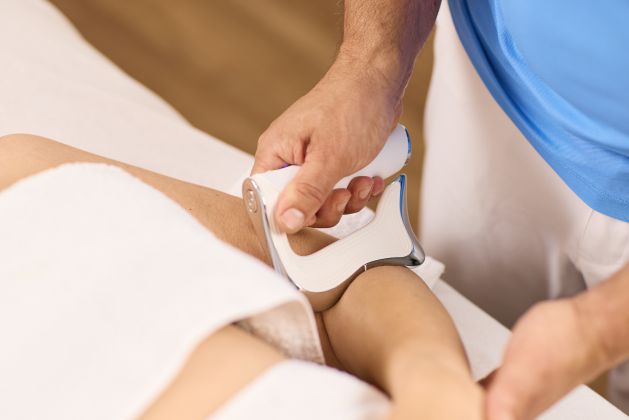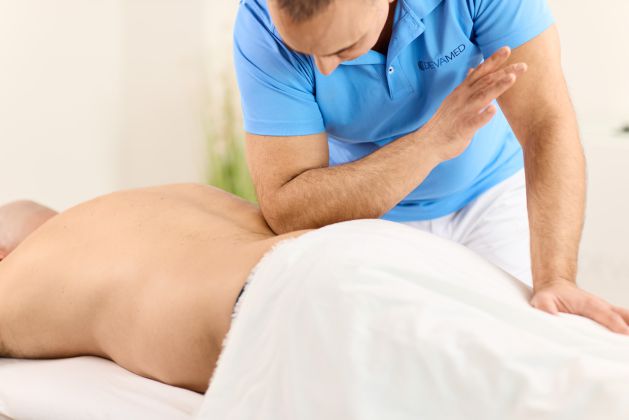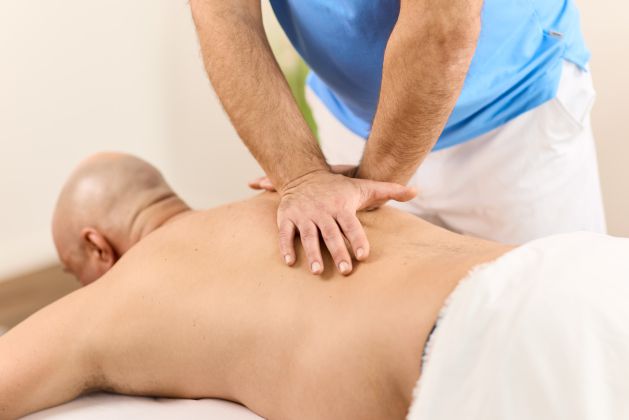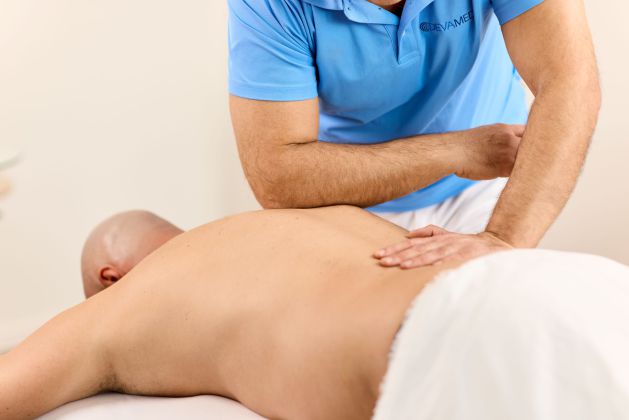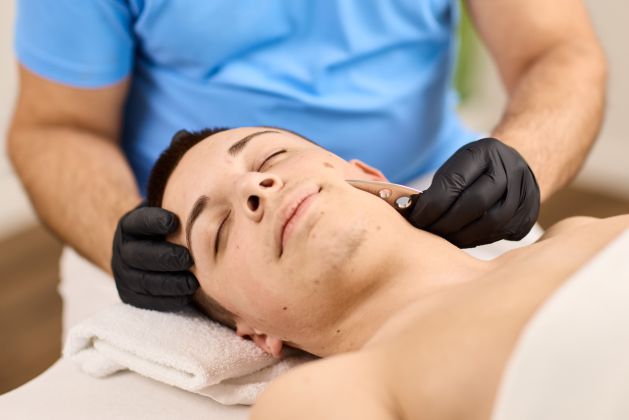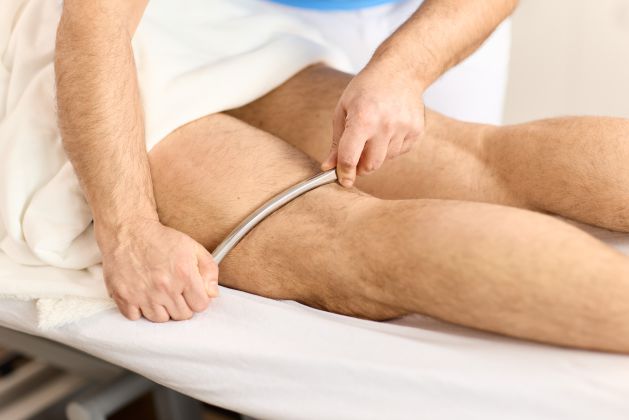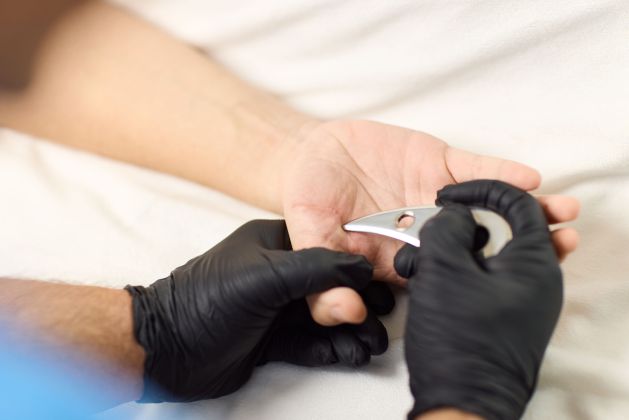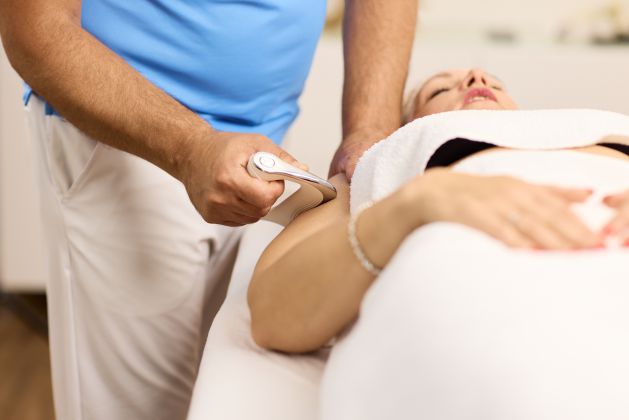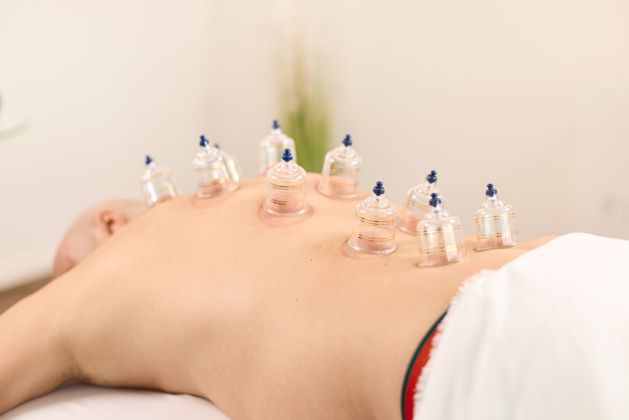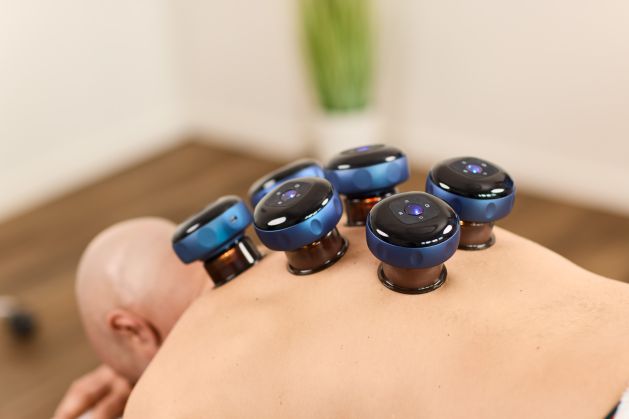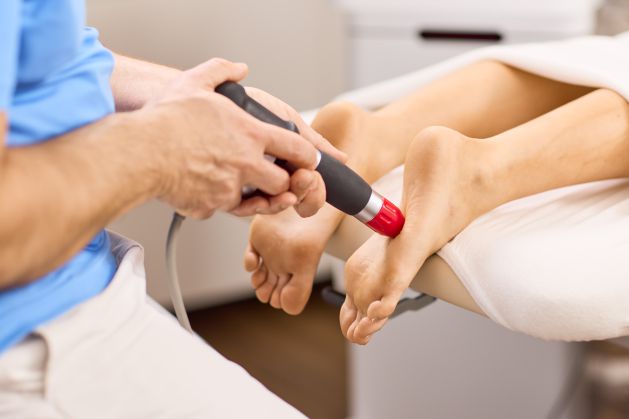Faszientherapie
Behandlungsart gegen Funktionsstörungen und Schmerzeherde des Stütz- und Bewegungsapparates
Unsere Faszien-Therapien
Die Revolution für gesunden Bewegungsapparat
Die fasziale Therapie ist eine äußerst effektive und vielseitige manuelle Behandlungsart, die sich auf Funktionsstörungen und Schmerzherde des Stütz- und Bewegungsapparates konzentriert. Sie zielt darauf ab, Dysfunktionen im Bindegewebe gezielt zu behandeln und das Faszien-Netzwerk wieder in einen gesunden Zustand zu bringen.
Das Bindegewebe spielt eine entscheidende Rolle für unser körperliches Wohlbefinden. Es umgibt nicht nur Muskeln sondern auch Knochen im menschlichen Körper. Wenn ein Teilbereich der Faszie gestört wird, kann dies Auswirkungen auf alle anderen Bereiche haben – einschließlich der dazugehörigen Bewegungsmuster. Dieses Netzwerk aus Faszien trägt unsere Organe, ernährt sie und schützt sie vor äußeren Einflüssen wie Infektionen oder Verletzungen.
Indem es Form und Halt an interne Organe gibt sowie gleichzeitig ihre Mobilität innerhalb unseres Skelettsystems ermöglicht, entsteht eine enge physiologisch-funktionelle Verbindung zwischen den einzelnen Komponenten unseres Körpers. Von unserem Herzen bis hinunter ins kleinere Gefäßsystem unserer Gliedmaßen erstreckt sich dieses wunderbare fasziale Netzwerk.
Die fasziale Therapie bietet eine breite Palette von Anwendungsmöglichkeiten zur Linderung von Schmerzen und Beschwerden. Sie kann bei verschiedenen Erkrankungen wie Migräne, Arthrose, Prellungen oder Neuralgien helfen sowie Kopfschmerzen, Muskelzerrungen und Nackenschmerzen lindern. Auch bei Rücken- oder Tennis- bzw. Golfellenbogen-Schmerzen kann sie eine wertvolle Unterstützung bieten. Darüber hinaus eignet sich diese Behandlungsform auch zur Rehabilitation von Verletzungen durch Überlastung wie beispielsweise Verstauchungen am Sprunggelenk oder posttraumatischen Komplikationen nach Unfällen.
Die fasziale Therapie ist ein kraftvolles Werkzeug, um den Körper wieder in seine natürliche Balance zu bringen und Schmerzen effektiv zu behandeln. Sie ermöglicht es uns, unser körperliches Wohlbefinden zu verbessern und unsere Gesundheit langfristig aufrechtzuerhalten. Lassen Sie sich von der faszialen Therapie begeistern und erleben Sie die positiven Auswirkungen auf Ihren Stütz- und Bewegungsapparat – für ein aktives und schmerzfreies Leben!
Die fasziale Therapie ist eine ganzheitliche Behandlungsmethode, die nicht nur auf den Körper sondern auch auf das Wohlbefinden des Patienten abzielt. Durch gezielte Grifftechniken und sanfte Berührungen werden Verspannungen gelöst und der Energiefluss im Körper wiederhergestellt. Die fasziale Therapie kann dabei helfen, Stress abzubauen und zu innerer Ruhe zu finden. Ein weiterer Vorteil dieser Methode besteht darin, dass sie ohne Medikamente auskommt – somit können unangenehme Nebenwirkungen vermieden werden. Auch bei chronischen Schmerzen oder Erkrankungen wie Fibromyalgie hat sich die fasziale Therapie als wirksam erwiesen.
Um von den positiven Effekten der Fasziendehnung profitieren zu können, sollten Sie einen erfahrenen Fachmann konsultieren. Dieser wird Ihnen individuell angepasste Übungsprogramme zusammenstellen sowie Tipps zur Verbesserung Ihrer Haltung geben. Insgesamt bietet die fasziale Therapie eine natürliche Alternative zur Schulmedizin mit vielen Vorzügen für Ihre Gesundheit – probieren Sie es doch einfach mal aus!
Anwendungsgebiete
-
Kopfschmerzen und Migräne
-
Arthrose oder Prellungen
-
Neuralgien
-
Verspannungen
-
Muskelzerrungen
-
Nackenschmerzen
-
Rückenschmerzen
-
Tennis- und Golfellenbogen
-
Verletzungen durch Überlastung
-
Verstauchungen (z.B. Sprunggelenk)
-
Posttraumatische Komplikationen nach Unfällen
-
Als Vorbeugung der Kontusionen bei professionellen Sportlern
-
Entzündungen der Gelenke (z.B. Schulter, Knie, Ellenbogen)
-
Entzündungen der Sehnen (z.B. Achillessehne, Rotatorenmanchete, Fingersehnen)
Gemeinsam zum Erfolg
Um Ihre individuellen Anforderungen bestmöglich zu erfüllen, laden wir Sie gerne zum persönlichen Gespräch ein.
